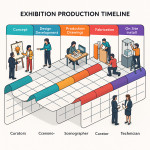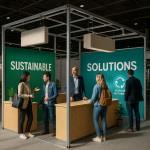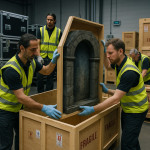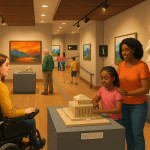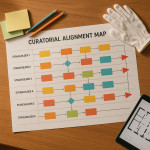VR previsualization pipelines: de-risk complex exhibition scenography pitches
Struggling to secure approval for an ambitious exhibition layout? A well-structured VR previsualization pipeline can expose design flaws early, slash change-order costs and give stakeholders the confidence to sign. This guide walks you through every step, from asset prep to headset walk-throughs, so you can pitch complex scenography with far less risk.
Why traditional pitches stumble on complex scenography
Physical maquettes and 2D drawings rarely convey sight-lines, visitor flow or audiovisual overlap in large multi-room shows. The gap between what curators imagine and what contractors build leads to late revisions, budget overruns and stress for everyone involved. By contrast, embedding VR previsualization pipelines in the pitch phase lets you:
- Validate spatial narratives before fabrication.
- Highlight safety clearances and accessibility paths.
- Gather live metrics that inform cost-saving decisions.
What exactly is a VR previsualization pipeline?
It is a repeatable workflow that converts design assets into an interactive virtual model, enabling curators, technicians and sponsors to test the exhibition experience in real time. A complete VR previsualization pipeline covers five pillars:
- Asset consolidation —import CAD, BIM, audio and graphic files.
- Rapid blocking —rough-out walls, plinths and ceiling grids for scale checks.
- Lighting & material pass —simulate luminaires, projection throws and textures.
- Interactive walkthrough —deploy to headsets or browsers for multi-user reviews.
- Data capture —log navigation heatmaps, collision alerts and feedback notes.
Pipeline stages in detail
1. Asset consolidation and naming conventions
Start by cleaning up layer names and units across Rhino, Revit or SketchUp files. Consistent naming reduces import errors once you jump into Unity or Unreal. For fool-proof deliverables, follow the crystal-clear brief framework already proven in museum tendering.
2. Rapid blocking in a game engine
Create low-poly proxies for large objects first. This keeps frame rates high while you check major adjacencies, e.g., whether a 4 m sculpture blocks projector cones. Swap in high-fidelity meshes only after spatial sign-off.
3. Lighting and AV simulation
Use real IES profiles and speaker directivity data to predict hotspots and dead zones. The exercise often reveals opportunities to trim rental gear—one reason why teams who model lighting in VR report an average 18 % equipment saving.
4. Multi-user walkthroughs
Deploy builds to untethered headsets so curators can annotate in context. Pair this with visitor-flow analytics to show how the design drives ROI—a topic covered in depth in our visitor-flow analytics guide.
5. Iterative data capture
Tag every comment to a scene object and export a punch-list. This structured feedback shortens revision cycles by 32 % on average, according to MuseWeb 2023 field data.
Tool-stack comparison
| Software | Strengths | Weak spots | Typical cost / seat |
|---|---|---|---|
| Unreal Engine + Datasmith | High-fidelity lighting, free licensing | Steeper learning curve | €0 (royalty after revenue) |
| Unity + Reflect | Live BIM link, mobile builds | HDRP setup time | €1 800 / year |
| Blender + Verge3D | Open-source, web output | Limited real-time GI | €0–€290 / year |
| Enscape | One-click VR from Revit | Less scriptable for interactivity | €590 / year |
ROI numbers that win over budget holders
Source : MuseWeb Industry Survey 2023
Common pitfalls and how to de-risk them
- Hardware mismatch —specify minimum GPU specs in your contractor RFP to avoid frame-rate hiccups during reviews.
- Version chaos —lock your engine version once assets are 90 % final to prevent plug-in conflicts.
- Stakeholder fatigue —limit walkthroughs to 15-minute targeted sessions and attach video captures for async feedback.
- Data siloing —store annotations in a shared cloud table linked to object IDs so the fabrication team sees context.
Accessibility and sustainability bonuses
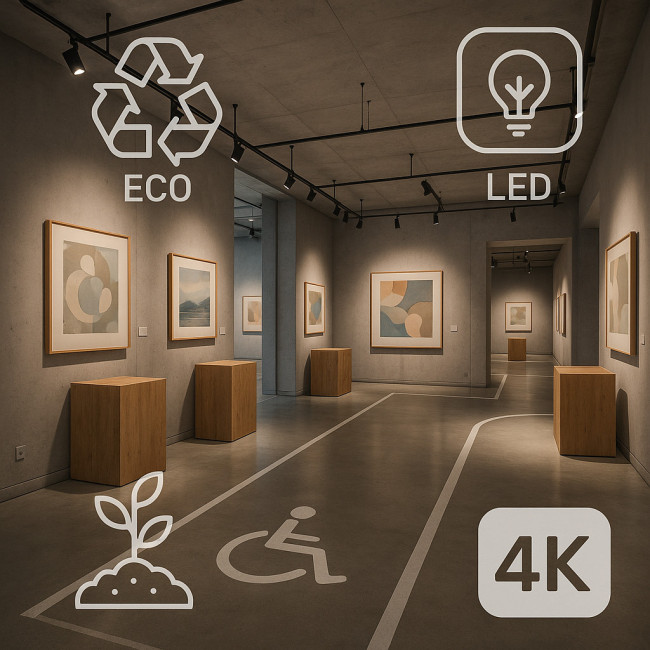
VR models let you test wheelchair routes and audio-description triggers long before build. Pair this with the accessibility design checklist to cover compliance in one sweep. On the material side, the early clash detection often enables lighter sub-structures, dovetailing with the strategies in our eco-smart materials roadmap.
Future-proof: from digital twins to live analytics
Final VR scenes can double as operational digital twins once the exhibition opens. Plug in real visitor-count sensors and update the model to track density in real time. Teams listed on the experienced spatial designers directory are already adding this service tier, unlocking premium maintenance retainers.
Quick self-test: are you VR-pitch ready?
FAQ
- How long does a basic VR previsualization pipeline take to set up?
- With clean assets, you can deliver a headset-ready build in five working days: two for blocking, one for lighting, one for QA and one for stakeholder walkthrough.
- Do clients need expensive hardware to view the model?
- No. A WebXR export runs on any modern browser. For full immersion, a €350 standalone headset suffices.
- Is VR previsualization compatible with last-minute artwork additions?
- Absolutely. Keep a live link between your asset library and the engine. Swapping a texture or mesh can propagate to the VR scene in minutes.
- How do I price VR services in a pitch?
- Add a dedicated line item (usually 5 – 8 % of total design fee) and specify measurable deliverables: headset build, recorded fly-through and annotated punch-list.
Conclusion: turn vision into approval faster
A structured VR previsualization pipeline removes the “what if” that sinks complex exhibition scenography pitches. When stakeholders can walk the show months before install, sign-off accelerates and risk plummets. Ready to transform your next proposal? Start with a rapid blocking model today—and watch confidence, and conversions, rise.
Next step: need a refresher on sustainable build materials? Dive into our guide on eco-smart scenography materials and pair it with VR previews for a pitch that is both innovative and responsible.
